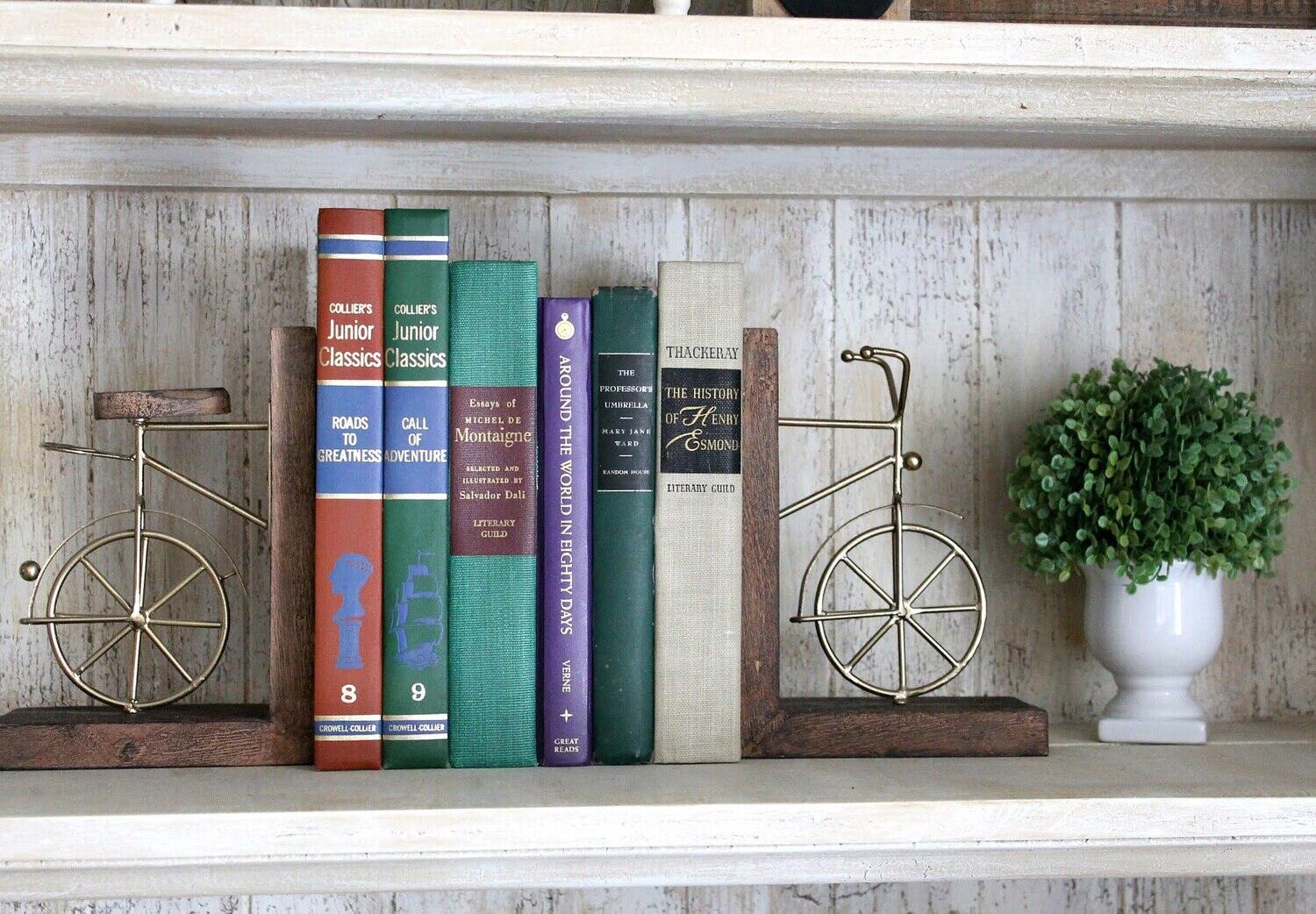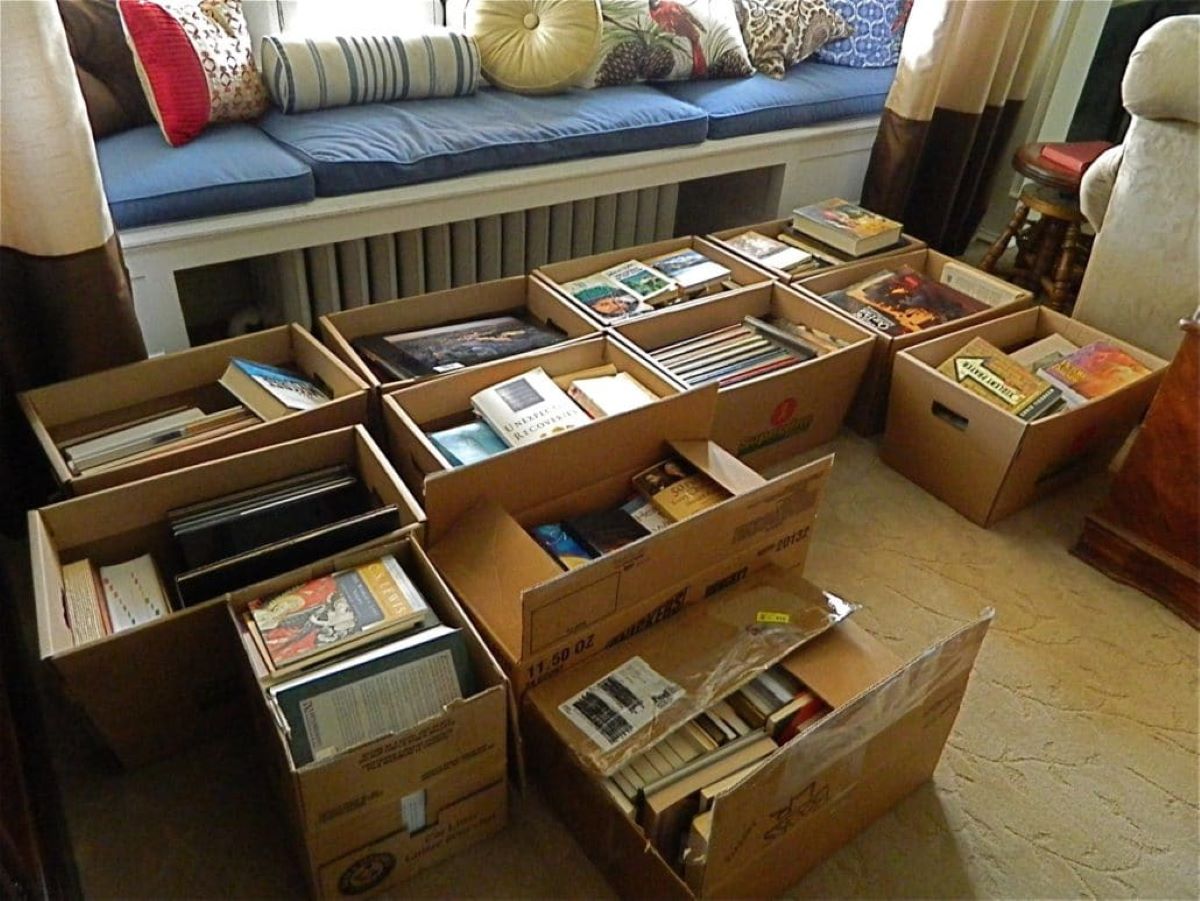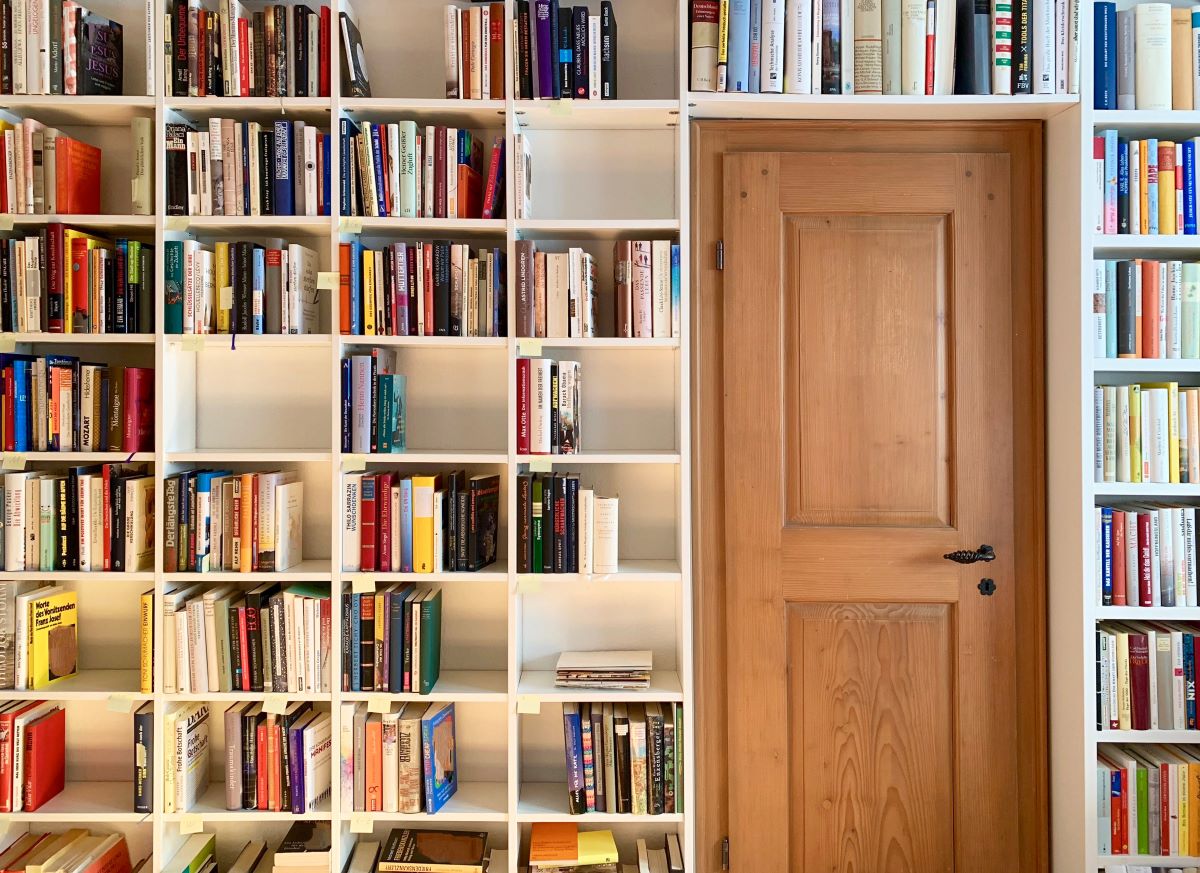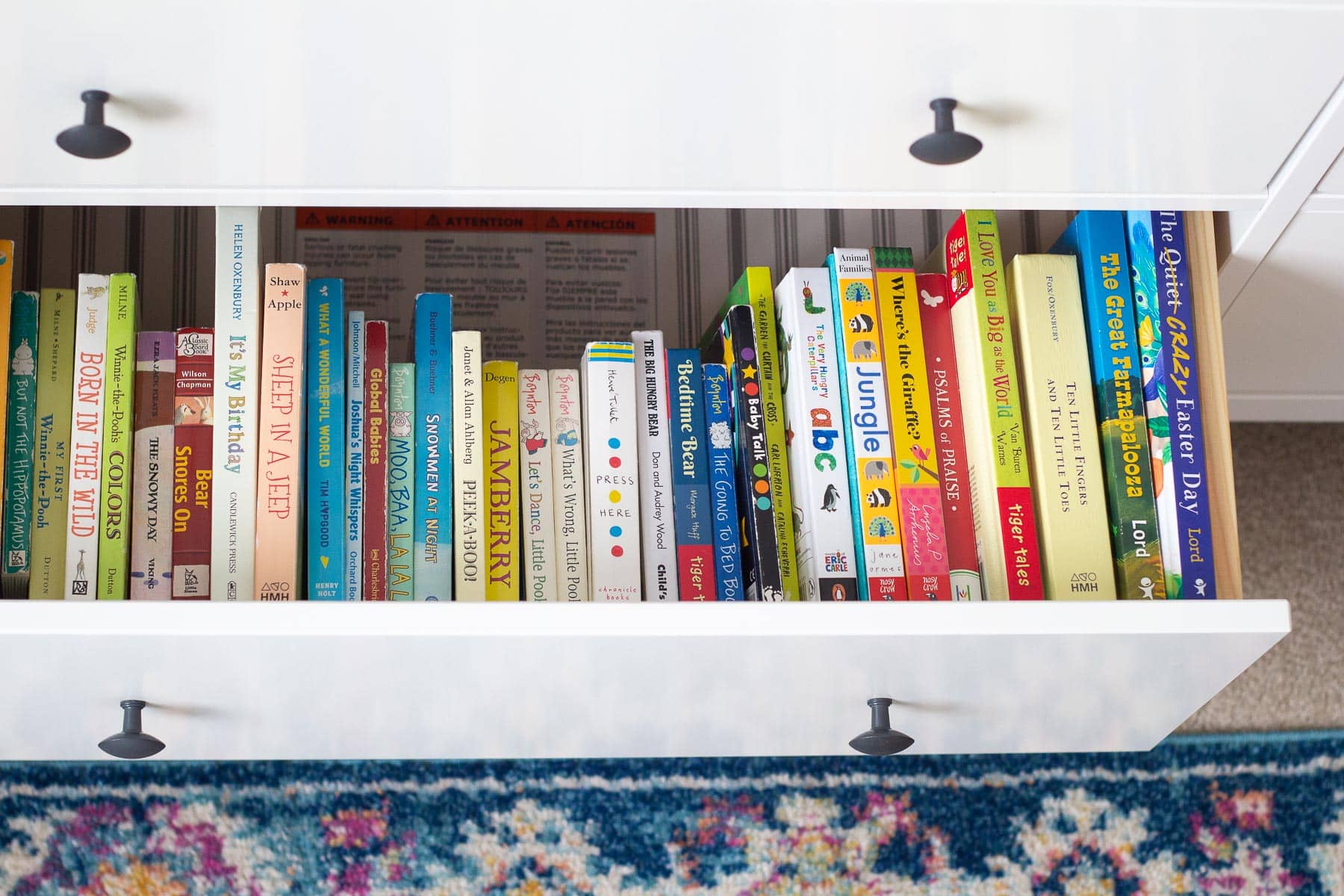

Articles
How To Store Books In Storage Unit
Modified: February 27, 2024
Learn how to store your articles and books in a storage unit to keep them safe and organized. Find tips and tricks for maximizing space and protecting your valuable collection.
(Many of the links in this article redirect to a specific reviewed product. Your purchase of these products through affiliate links helps to generate commission for Storables.com, at no extra cost. Learn more)
Introduction
When it comes to storing your precious book collection, it’s important to take the necessary steps to ensure their safety and longevity. Whether you’re temporarily storing books during a move or looking for a long-term storage solution, proper organization and protection are key to preserving their condition.
In this article, we will discuss everything you need to know about storing books in a storage unit. We’ll cover topics such as assessing the storage unit space, choosing the right storage containers, organizing your books by category, protecting them from damage, properly packing them, arranging them in the storage unit, creating a catalog or inventory system, maintaining the ideal storage conditions, regularly checking and cleaning the books, and retrieving them when needed.
By following these tips, you can ensure that your books remain in good condition, even while in storage. So, let’s dive in and learn how to store books in a storage unit effectively.
Key Takeaways:
- Properly storing books in a storage unit involves careful planning, organization, and maintenance. From choosing the right containers to maintaining ideal storage conditions, each step is crucial for preserving your book collection.
- Creating a catalog or inventory system simplifies the retrieval process, while regular checks and cleaning ensure continued preservation. By following these steps, you can protect and enjoy your cherished books whenever you need them.
Read more: How To Store Books In Storage
Assessing the Storage Unit Space
Before you start packing your books, it’s crucial to assess the space in the storage unit. Knowing the dimensions of the unit will help you determine the number and size of storage containers needed. Here are some important factors to consider:
- Measure the space: Use a tape measure to determine the exact measurements of the storage unit, including height, width, and depth. This will help you visualize how your books will fit and allow you to plan accordingly.
- Consider accessibility: Think about how easily you’ll be able to access your books. If you plan on retrieving them frequently, it’s best to choose a storage unit with ample space and easy accessibility.
- Take note of any limitations: Some storage facilities have restrictions on the types of items you can store. Check with the facility to ensure that storing books is allowed and inquire about any specific guidelines or restrictions.
- Inspect for potential hazards: Thoroughly inspect the storage unit for any signs of leaks, pests, or other environmental factors that could damage your books. Ensure that the unit is dry, clean, and well-maintained.
By assessing the storage unit space beforehand, you can plan your book storage strategy effectively. This will help you utilize the space efficiently and ensure that your books are stored safely.
Choosing the Right Storage Containers
Once you’ve assessed the storage unit space, it’s time to choose the right storage containers for your books. Using appropriate containers will provide protection against dust, moisture, and potential damage during transportation and storage. Here’s what you should consider when selecting storage containers:
- Material: Opt for containers made of sturdy materials such as plastic or durable cardboard. They should be able to withstand weight and provide adequate protection against moisture and pests.
- Size: Choose containers that are appropriately sized for storing books. Avoid oversized containers that can make it difficult to stack and access your books, or small containers that may not provide sufficient space for the books to be packed securely.
- Closure: Look for containers with secure closures, such as latches or tightly-fitting lids, to ensure that the books are well-protected from dust, pests, and moisture.
- Labeling: Select containers that have a smooth surface for easy labeling. This will help you identify the contents of each container, making it easier to retrieve specific books when needed.
- Stackability: Consider the stackability of the containers. Opt for containers that can be easily stacked without compromising their integrity. This will help you make the most out of the vertical space in the storage unit.
Remember to avoid using containers that are prone to damage or deterioration, such as old cardboard boxes or containers with signs of mold or insect infestation. Investing in durable and reliable storage containers will go a long way in safeguarding your book collection.
Organizing Your Books by Category
Now that you have your storage containers ready, it’s time to organize your books by category. This will make it easier to locate specific books when you need them. Here are some tips for organizing your books:
- Sort by genre or topic: Begin by sorting your books into different categories based on genre, topic, or any other criteria that make sense to you. Some common categories include fiction, non-fiction, history, fantasy, self-help, and reference books.
- Create subcategories: If you have a large collection within a specific genre, consider creating subcategories to further organize your books. For example, within the fiction category, you can have subcategories like romance, mystery, science fiction, etc.
- Consider alphabetical order: Within each category or subcategory, you may choose to organize the books alphabetically by author’s last name or by book title. This method allows for easy browsing and locating specific titles.
- Utilize labels or color-coding: Use labels or color-coding systems to identify the various categories or subcategories. This will help you quickly find the relevant storage containers and ensure that your books are properly organized.
- Document your organization: Keep a list or inventory of the books you’re storing, noting which container they’re in and their category. This will assist you in maintaining an overview of your collection and enable you to easily find specific titles in the future.
By organizing your books according to categories, you’ll have a systematic approach to storing and retrieving them. This will save you time and effort, allowing you to enjoy your books more efficiently.
Protecting Your Books from Damage
When storing your books in a storage unit, it’s essential to take precautions to protect them from potential damage. Here are some important steps you can take to safeguard your books:
- Keep books away from moisture: Moisture is one of the biggest enemies of books as it can lead to mold, mildew, and pages sticking together. Ensure that the storage unit is dry and consider using moisture-absorbing products like silica gel packets or dehumidifiers.
- Protect against pests: Keep your books safe from pests, such as mice or insects, by inspecting the storage unit regularly for any signs of infestation. Consider using pest control methods, such as traps or repellents, if necessary.
- Avoid direct sunlight: Sunlight can fade book covers, damage pages, and cause deterioration. Store your books away from direct sunlight by positioning them in shaded areas of the storage unit or covering them with a cloth or sheet.
- Maintain proper ventilation: Adequate airflow is crucial to prevent the buildup of musty odors and to keep the books in good condition. Avoid fully sealing or packing books in airtight containers to allow for proper ventilation.
- Use acid-free materials: Acidic materials, such as cardboard or newspaper, can gradually damage books over time. Opt for acid-free archival-quality storage materials, such as acid-free boxes or book sleeves, to protect your books from deterioration.
- Keep books upright or flat: Store books either upright on bookshelves or flat in storage containers. Avoid stacking books too tightly, as this can lead to damage or warping of the spines. Use bookends or dividers to support the books in an upright position.
By implementing these protective measures, you can minimize the risk of damage to your books and ensure their longevity, even while in storage.
Read more: How To Store Books In Bedroom
Properly Packing Your Books
Once you have organized and protected your books, it’s time to pack them securely in the storage containers. Proper packing is crucial to avoid damage to your books during transportation and storage. Here are some tips for packing your books:
- Clean the books: Before packing, ensure that your books are clean and free from any dust or debris. Use a soft, dry cloth or brush to gently clean the covers and pages. Avoid using water or cleaning solutions directly on the books.
- Wrap delicate books: For books with delicate covers or pages, consider wrapping them individually in acid-free tissue paper or archival-quality plastic sleeves. This will provide an extra layer of protection against scratches or tears.
- Group books of similar size: When packing the books, group those of similar size together. This will help you stack the containers more efficiently and prevent smaller books from being damaged or lost within larger ones.
- Fill empty spaces: If there are any gaps or empty spaces within the storage container, fill them with bubble wrap, packing paper, or foam peanuts. This will provide additional support and prevent the books from shifting during transportation.
- Position books standing upright: If you choose to store the books in an upright position, make sure they are snugly packed together to avoid leaning or falling. Use dividers or bookends to keep them in place and prevent damage to the spines.
- Do not over-pack: It’s important not to over-pack the storage containers, as this can lead to damage to the books and make it difficult to access them later. Leave some empty space at the top of the container to allow for easy closure.
By properly packing your books, you can minimize the risk of damage and ensure that they remain in good condition throughout their time in storage.
When storing books in a storage unit, make sure to use sturdy, stackable boxes to protect them from damage. Store them in a cool, dry place away from direct sunlight to prevent warping and discoloration.
Arranging Your Books in the Storage Unit
Now that your books are securely packed, it’s time to arrange them in the storage unit. A well-organized storage unit will not only maximize space but also make it easier for you to locate and retrieve your books when needed. Here are some tips for arranging your books:
- Start with a plan: Before placing the storage containers in the unit, create a plan of how you want to arrange them. Consider factors such as accessibility, stackability, and the frequency of retrieval for different categories of books.
- Create aisles: Leave enough space between rows of storage containers to create aisles. This will allow you to easily navigate and access your books without having to move multiple containers.
- Place frequently accessed books up front: If there are specific books or categories that you anticipate needing more frequently, place them towards the front of the storage unit for easy access.
- Stack containers strategically: Stack the containers in a stable and secure manner, ensuring that heavier containers are at the bottom and lighter ones on top. Avoid stacking too high to prevent toppling or damage to the books inside.
- Leave space for ventilation: Allow for proper air circulation between containers by leaving small gaps between stacks or leaving space along the walls of the storage unit. This will help prevent musty odors and maintain ideal storage conditions.
- Make use of vertical space: Utilize the vertical space by stacking containers on sturdy shelves, if available. This will help maximize the storage capacity of the unit and keep your books organized.
Remember to label the containers clearly and have a detailed inventory of the placement of your books. This will make it easier for you to locate specific books and maintain an organized storage unit.
Creating a Catalog or Inventory System
Keeping track of your book collection is essential to effectively manage your storage unit and easily retrieve specific titles when needed. Creating a catalog or inventory system will help you maintain an organized record of the books you have stored. Here are some steps to establish a catalog or inventory system:
- Choose a method: Determine the method you will use to create your catalog or inventory. This can be an offline system using pen and paper or a digital system using spreadsheet software or specialized inventory management tools.
- Record relevant details: For each book, note down important details such as the title, author, publication year, and any other identifiers that will help you easily identify and locate the book. You may also include additional information like genre, category, or condition.
- Assign unique identifiers: Assign a unique identifier to each book in your catalog. This can be a simple numerical system or using alphanumeric codes. The identifier will help you quickly reference and locate the corresponding storage container.
- Update regularly: To maintain an accurate catalog, update it regularly whenever you add or remove books from storage. This will ensure that your inventory remains up to date and reflects the current contents of your storage unit.
- Consider digital options: If you choose to use a digital catalog or inventory system, explore options for barcode scanning or ISBN recognition. These technologies can streamline the process of adding books to your inventory and provide additional information about each book.
- Keep a backup: Whether you opt for a physical or digital inventory system, it’s important to keep a backup of your catalog. This will safeguard against the loss or damage of your inventory and provide a means to recover the data if needed.
Having a comprehensive catalog or inventory system will save you time and effort when retrieving books from storage. It will also help you maintain an organized collection and prevent any confusion or misplacement of your books.
Maintaining the Ideal Storage Conditions
To ensure the long-term preservation of your books in storage, it’s important to maintain the ideal storage conditions. Proper storage conditions will help prevent damage and deterioration caused by temperature, humidity, and other environmental factors. Here are some guidelines for maintaining the ideal storage conditions:
- Temperature: Aim for a stable temperature between 60-75 degrees Fahrenheit (15-24 degrees Celsius). Avoid extreme fluctuations in temperature, as they can cause warping and other structural damage to your books.
- Humidity: Maintain a relative humidity level between 30-50%. Excessive humidity can promote mold growth and binding adhesion, while low humidity can lead to dryness and brittle pages. Consider using dehumidifiers or moisture absorbers to regulate humidity levels in the storage unit.
- Air Circulation: Adequate air circulation is essential to prevent musty odors and mitigate the risk of mold and mildew formation. Avoid sealing storage containers completely and leave some space between them to allow for proper airflow.
- Light Exposure: Protect your books from direct sunlight and harsh artificial lighting, as they can fade book covers and deteriorate pages. Position your storage containers away from windows or use light-blocking curtains or blinds to minimize light exposure.
- Security: Ensure that the storage unit is secure and properly closed to prevent unauthorized access, theft, or damage. Use locks or security measures recommended by the storage facility to safeguard your books.
- Fire Safety: Inspect the storage unit for fire safety measures and comply with any guidelines provided by the storage facility. Consider storing valuable or irreplaceable books in fire-resistant storage containers for added protection.
Regularly monitor the storage conditions, especially during extreme weather conditions, and take necessary measures to maintain the ideal storage environment. This will help preserve the quality and condition of your books while they are in storage.
Read more: How To Store Books Without A Bookshelf
Regularly Checking and Cleaning Your Books
While your books are in storage, it’s important to periodically check and clean them to ensure their continued preservation. Regular inspections and cleaning routines will help you identify any potential issues and prevent damage. Here are some steps for regularly checking and cleaning your books:
- Inspect for pests: Regularly inspect your books for signs of pests such as insects or rodents. Look for droppings, chewed pages, or any other indications of infestation. If you notice any signs, take immediate action to address the pest problem.
- Dust the books: Dust can accumulate on the covers and pages of your books over time. Use a soft, dry cloth or a clean, soft brush to gently remove any dust. Avoid using water or cleaning solutions directly on the books, as they can damage the pages or bindings.
- Monitor for mold or mildew: Check your books for any signs of mold or mildew growth. Look for discoloration, a musty odor, or a fuzzy appearance on the covers or pages. If you suspect mold or mildew, isolate the affected books and take appropriate measures to prevent the spread of the infestation.
- Check for damage: Inspect your books for any signs of damage, such as torn pages, loose bindings, or damaged covers. If you identify any issues, consider repairing or seeking professional assistance to prevent further damage.
- Reorganize if necessary: As your book collection evolves, you may need to reorganize your storage unit. Take the opportunity during your regular checks to rearrange or update your book organization as needed.
- Keep records: Document any changes or updates to your catalog or inventory system during your regular checks. This will help you maintain an accurate record of your stored books and ensure that you can easily locate specific titles as needed.
Regularly checking and cleaning your books will help preserve their condition and extend their lifespan in storage. By being proactive, you can address any issues promptly and ensure that your book collection remains in good shape.
Retrieving Your Books from Storage
When the time comes to retrieve your books from storage, it’s important to have a systematic approach to ensure a smooth and efficient process. Here are some steps to follow when retrieving your books:
- Refer to your catalog or inventory: Consult your catalog or inventory system to identify the specific storage containers that hold the books you want to retrieve. This will help you quickly locate the desired books without unnecessary searching.
- Prepare the storage unit: Before accessing the storage unit, ensure that you have a clear path and sufficient space to maneuver. Move any obstacles or items blocking your way to make the retrieval process easier.
- Take caution when handling containers: When retrieving the storage containers, handle them with care to avoid dropping or damaging the books inside. Lift containers using proper lifting techniques and avoid placing heavy items on top of containers.
- Organize the retrieved books: As you retrieve the books from the storage containers, organize them accordingly based on your preferred categorization system. This will help you keep track of the books you have retrieved and make it easier to locate specific titles in the future.
- Inspect for any damage: Evaluate the condition of the retrieved books for any signs of damage or deterioration. If you notice any issues, such as moisture damage, mold, or torn pages, address them promptly to prevent further damage.
- Return unused books promptly: If you retrieve more books than you initially planned to use, promptly return the unused books to their respective storage containers. This will help maintain the integrity of your organizational system and prevent confusion in the future.
- Reorganize the storage unit: Once you have retrieved the desired books, take the time to reorganize the storage unit, ensuring that the remaining containers are stacked securely and organized based on your preferred system. This will help you easily locate and retrieve books in the future.
By following these steps, you can efficiently retrieve your books from storage and maintain the organization of your collection. Remember to handle the books with care and address any potential issues promptly to preserve their condition.
Conclusion
Properly storing and preserving your books in a storage unit requires careful planning, organization, and maintenance. By following the steps outlined in this article, you can ensure that your books remain in excellent condition while in storage. From assessing the storage unit space to choosing the right storage containers, organizing your books by category, protecting them from damage, and properly packing and arranging them in the storage unit – each step plays a crucial role in preserving your book collection.
Creating a catalog or inventory system allows you to track the books you have stored, making it easier to locate and retrieve specific titles. Maintaining the ideal storage conditions helps prevent damage caused by temperature, humidity, light exposure, and pests. Regularly checking and cleaning your books ensures their continued preservation and helps identify any potential issues that need to be addressed promptly.
When the time comes to retrieve your books, referring to your catalog or inventory system will simplify the process. By practicing caution when handling the storage containers and organizing the retrieved books, you can ensure an efficient retrieval experience. Lastly, reorganizing the storage unit after retrieval helps maintain an organized collection for future access.
Remember, the key to successful book storage is to strike a balance between preserving the condition of the books and making the retrieval process convenient. With proper planning and implementation of the strategies discussed in this article, you can rest assured that your cherished book collection will remain protected and ready to be enjoyed whenever you need them.
Frequently Asked Questions about How To Store Books In Storage Unit
Was this page helpful?
At Storables.com, we guarantee accurate and reliable information. Our content, validated by Expert Board Contributors, is crafted following stringent Editorial Policies. We're committed to providing you with well-researched, expert-backed insights for all your informational needs.














0 thoughts on “How To Store Books In Storage Unit”